T-shirt Printing Guide: How to Print on Transfer Paper?
by Alice Davis
If you’re just getting started in the t-shirt printing industry, one of the items you’ll find yourself working with almost all the time is a transfer paper. This special paper carries your desired design and transfers it to your fabric using a heat press machine.
To obtain quality printing results, you ought to know how to handle the transfer paper correctly.
Our guide below outlines everything you need to know about the heat transfer paper and how to use it correctly.

The Basics of Heat Transfer paper
Before you can get your feet wet, let’s first walk through some background info you need to know about the transfer paper.
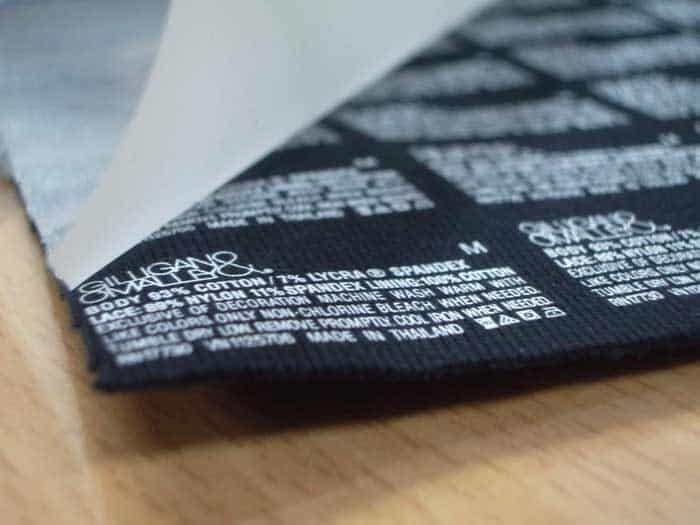
Know the different types of transfer papers
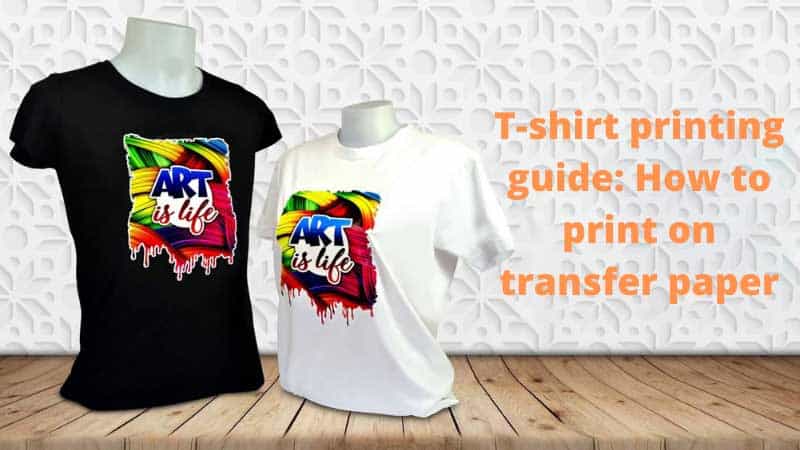
One of the things you need to keep in mind before you start using these specialty papers is that they come in different types.
We can divide the papers into two MAIN categories:
- Light transfer paper: as the name suggests, papers under this category are light-colored. They feature extremely light colors such as white, baby pink, and so on. These are the papers to use if you plan to print on light-colored shirts. This is because the ink used with these papers is usually translucent and will only be visible when used on light-colored fabrics
- Dark transfer papers: the dark transfer papers are great for transferring designs onto dark fabrics. The ink usually gets transferred in a white background to help block the fabric color from showing when using this paper.
Knowing the different types of papers will help ensure you pick the right one depending on your fabric color, and you’re sure to achieve great print results.
Transfer papers and different types of printer
We can further divide the transfer papers based on the type of printer they work with and the method used to transfer the design.
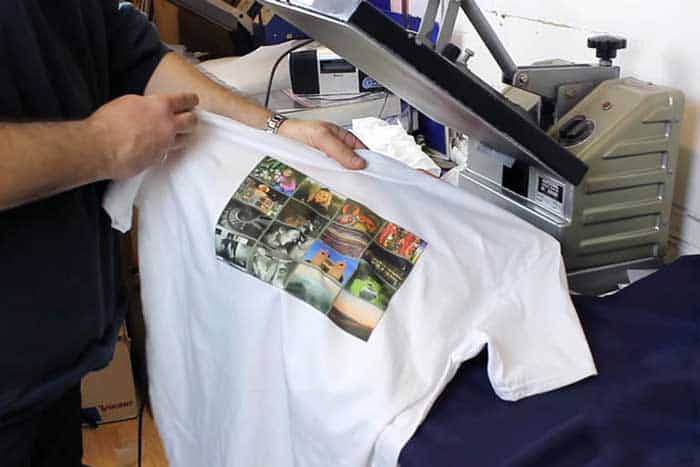
- Inkjet transfer paper: this is the most common transfer paper used for home and small business t-shirt printing. The paper works with a normal inkjet printer and uses the standard inkjet inks.
- Eco-solvent transfer paper: the eco-solvent heat transfer paper is a great alternative to inkjet transfer paper if you’re in a professional t-shirt printing business. It works with inkjet printers as well as flatbed and piezoelectric photo printers.
- Laser transfer paper: works with laser printers.
- Sublimation transfer paper: this paper is designed for use in conjunction with the sublimation printer systems and inks
Other transfer papers based on transfer methods include plastisol screen printed transfer paper, cold-peel screen printed transfer paper, and heat transfer vinyl.
You’ll need a heat press machine
Although these special papers are available in different types, they all have one thing in common.; they’re applied to a t-shirt using heat and pressure. You’ll need a heat press machine or home iron (ensure you get an iron-on transfer paper if you go with the iron method) to apply the right pressure and heat.
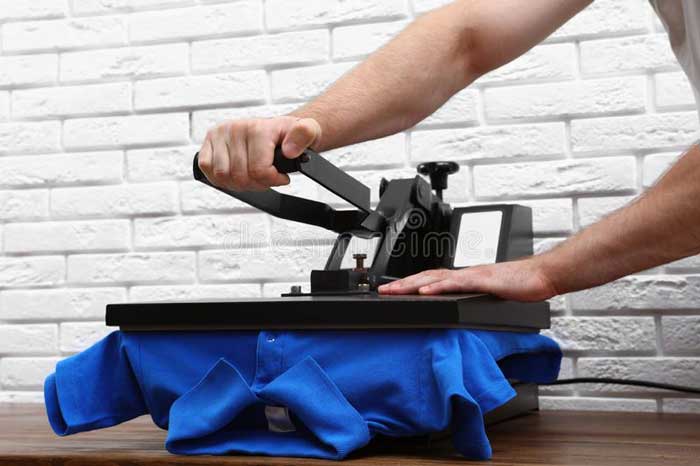
The good thing about heat press machines is that they come in numerous designs, sizes, and price tags, so getting a good beginner heat press machine for your needs will be easy.
Step-by-Step Guide for Printing On Transfer Paper:
Step 1: Create the design
You’ll start by creating a graphic that you’ll be printing on your garment. This can be anything from artwork, image, writing, logo—anything you wish to customize your shirt with!
To create stunning artwork, you’ll need to use a computer and appropriate software.
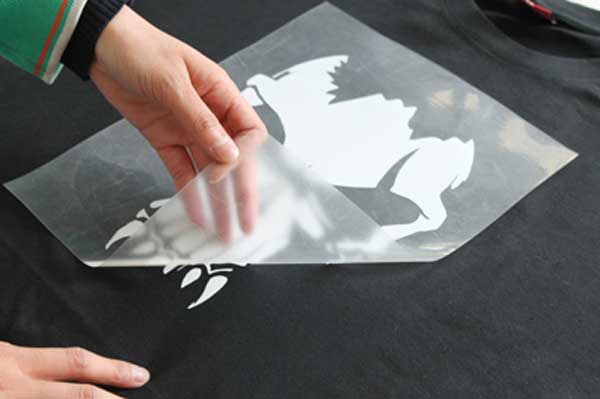
You’ll use the software to create and edit the design until you’re satisfied with how it looks. You can use free or paid software for this job. Some of the most popular software used by professional t-shirt printing business include adobe illustrator and Corel-draw software.
Quick Tip: If you don’t have a computer and software, you might consider hiring a freelance graphic designer to make the design for you.
Step 2: Print the design on transfer paper
Assuming you have already decided on the best heat transfer paper to use, based on the information we provided you with earlier one, this is where you put it to use.
Printing on a transfer paper is nothing complicate as it’s the same process as printing on an ordinary paper.
Before you make the final print, however, remember to reverse or mirror your graphic. If you forget this crucial step, your image will appear the wrong way when you finally print it on your garment. This will make you frustrated and lead to wastage of transfer paper.
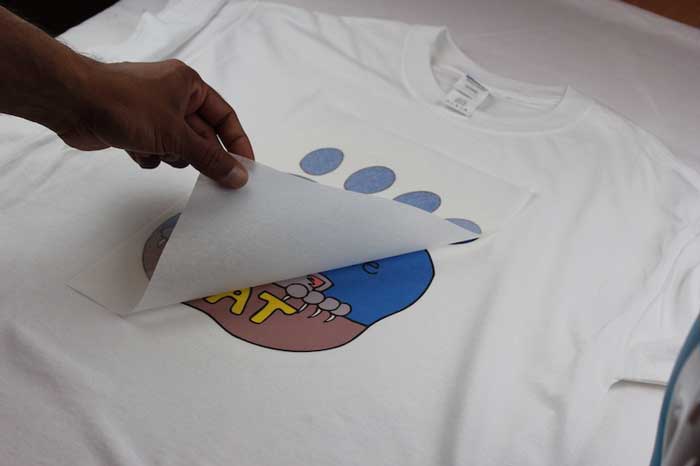
Mirroring the image is especially important if you’re printing on a light transfer paper. In most cases, you don’t need to reverse the image for a dark transfer paper.
Step 3: Get your heat press ready
With your design already printed on your transfer paper, the next thing you ought to do is get your heat press machine ready to press the design onto your garment.
A heat press machine is incredibly easy to use, even for beginners. Most models come with a user manual on how to operate them.
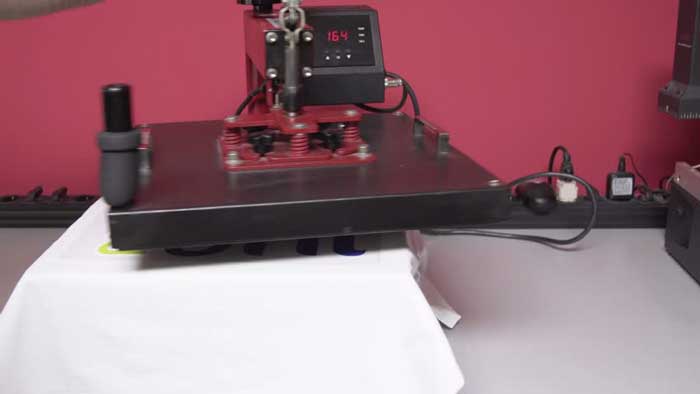
You simply open it and adjust the necessary settings to get it running. The key aspects you need to set/adjust on your heat press include the temperature and pressure (the thicker your garment, the more pressure you’ll need to apply).
The modern heat press machines come with a timer that you can use to pre-set the image’s duration of transfer. This helps prevent overexposure of the design for the best results.
Step 4: Test the transfer paper
Is your heat press ready for the job? Great! As a beginner, we advise you against getting straight to printing your design on your garment. Instead, do a test to see how the final print will look like.
For this part, you’ll need to use old shirts and fabrics. You’ll also need to invest in several transfer papers so that you can reprint your design if the first one doesn’t come out well.
See how the print appears on your t-shirt. Check the color contrast, size ratio, etc., and see if they need adjusting based on how the test prints look.
When you’re convinced you’ve gotten the perfect design, it’s time to print it on the garment.
Step 5: Print your t-shirt
Place your shirt on the heat press and place the transfer paper on it such that the printed side touches your shirt exactly where you want your design to go. Place a Teflon paper a top your t-shirt.
Check that the transfer paper hasn’t shifted or slipped off the shirt.
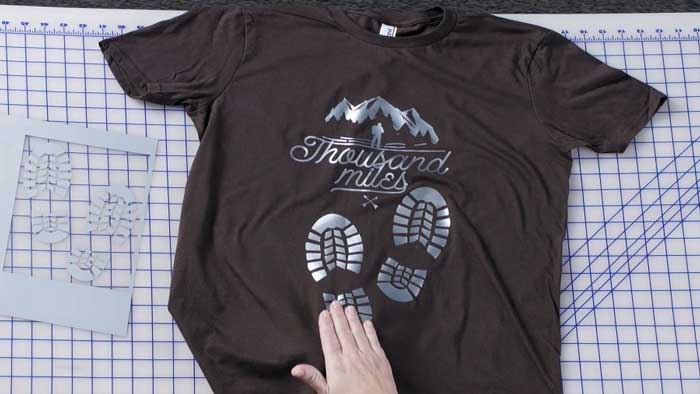
When everything is set, press your machine to start the transfer process. If you’re worried that the ink might get to the other side of your shirt, consider placing a cardboard paper between the two sides of your shirt.
Finally, remove your shirt and allow it to dry before you can fold and pack it.
Mistakes To Avoid When Using Heat Transfer Paper
Before we end this guide, we’d like to point out some common mistakes that beginners keep repeating when working with transfer papers.
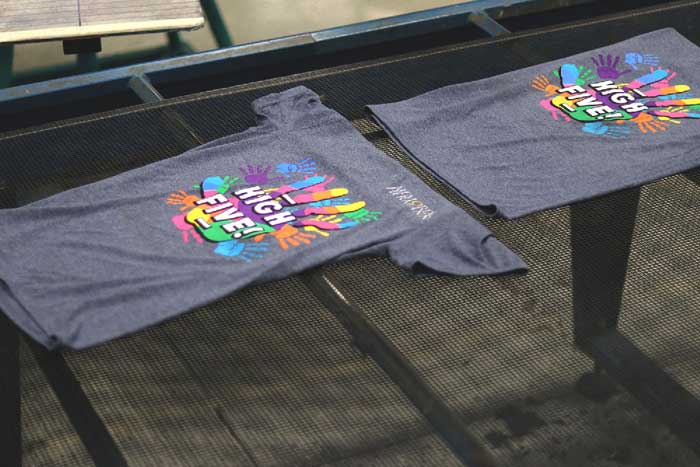
Avoid making these mistakes when you get down to printing on a transfer paper:
- Not reversing the image before printing it on the transfer paper. Filing to reverse or mirror your design before printing it on the transfer paper will lead to the image appearing wrongly on your garment.
- Using the wrong type of transfer paper. We have discussed the different transfer papers available in detail, so make sure you pick the right one for the job.
- Most beginners also print on the wrong side of the transfer paper. Make sure you print your graphic on the coated side of the paper to ensure problem-free image transfer
- Printing the design directly to the paper without running tests. If you skip this step, the final outcome might not look so good.
- Pressing on the wrong shirt material. The type of fabric used should withstand the extremely high temperatures of heat press machines. Any heat-sensitive fabric will end up burning. The suitable fabrics for use with this printing method are mostly synthetic materials and include spandex, cotton, and polyester.
Final Word
See, no magic involved in printing on a transfer paper! All you have to do is follow the simple steps outlined here to print your design on a transfer paper as an absolute beginner. You just need to ensure you’ve got the right type of transfer paper, a suitable printer, and a good heat press machine, and you’ll have an easy time transferring that design onto your t-shirts.
 |
 |
 |
 |
 |
 |
 |
 |

About Alice Davis
Alice is a writer who lives in the City of Long Beach. She has a husband, an exceptionally small chihuahua, and 15-pound Maine Coon. Alice got her bachelor of science in biological science from UC Berkeley. Now, she likes writing about a lot of things; including but not limited to technology reviews, science stuff, and anything food-related.
Leave a Reply
You can get FREE Gifts. Or latest Free phones here.
Disable Ad block to reveal all the info. Once done, hit a button below
 |
 |
 |
 |